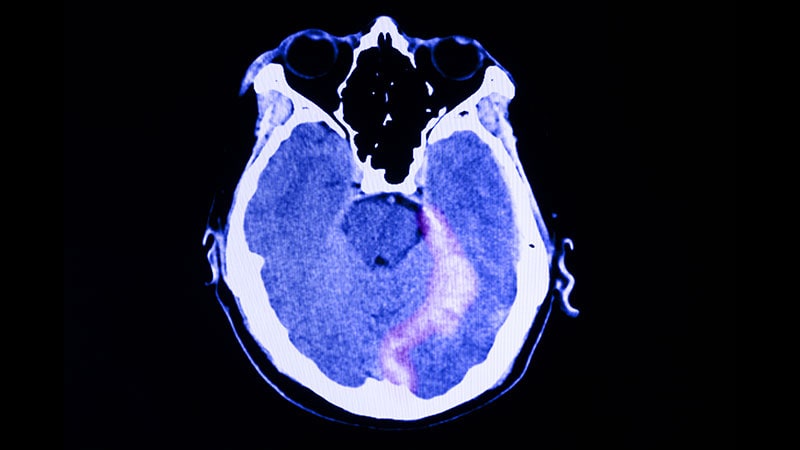DENVER — Among residents of urban environments, the highest levels of exposure to environmental trichloroethylene (TCE) is associated with a 24% increase in risk of Parkinson's disease, according to results from a new nationwide analysis of a Medicare population.
TCE has long been used as an industrial solvent, and it is a component of several household cleaning products. Case reports have suggested that workers exposed to it have increased risk of Parkinson's disease, with risk increases as high as 500%.
Exposure can come through air or water, but 97% of environmental TCE is found in the air, according to Brittany Krzyzanowski, PhD, who presented the study at the 2024 annual meeting of the American Academy of Neurology.
Previous studies of TCE had looked primarily at occupational exposure, such as workers at TCE-emitting facilities, or soldiers stationed at Camp Lejeune in North Carolina, where levels of TCE were more than 70-fold higher than EPA-permissible levels. A recent study found a 70% increase in risk of Parkinson's disease associated with individuals who were stationed there.
From Population Data to Individual Risk
In an interview, Dr. Krzyzanowski pointed out that the Camp Lejeune studies didn't assign TCE exposure to individuals — instead, researchers noted whether an individual was stationed at that base or another. "Our study adds to the previous work by investigating environmental exposure using TCE estimates that we are able to assign to individuals. [It shows that] you don't have to work in a facility with TCE, you don't have to be stationed on a military base with tainted water, you just have to live in a census tract with higher levels of TCE to have increased risk," said Dr. Krzyzanowski, a research assistant professor at Barrow Neurological Institute in Phoenix.
In the new study, Dr. Krzyzanowski and her colleagues analyzed data from 1,559,135 Medicare beneficiaries with no other health coverage, who had a valid US ZIP code. There were 252,700 incident cases of Parkinson's disease who were initially diagnosed between 2016 and 2018. These individuals were matched 1:5 with 1,306,435 healthy controls.
Airborne TCE exposure data was drawn the Environmental Protection Agency's National Air Toxics Assessment data from 2005, about 12 years prior to the start of the study and in line with the expected latency between exposure and development of Parkinson's disease.
"We found a nationwide association between airborne TCE exposure and Parkinson's disease risks, but this was only true for the metropolitan areas. Within these metro areas, there was a dose-response effect, where increasing levels of TCE were associated with increasing risk of Parkinson's disease. In particular, those living in the metros with the highest levels of TCE had a 24% greater risk of Parkinson's compared with those in metros with the lowest levels of TCE," Dr. Krzyzanowski said during her presentation. The P-value for the trend was less than.0001.
The census tracts in metropolitan areas are smaller than those in rural areas because of differences in population density, and this leads to greater precision of TCE exposure estimates in urban environments, according to Dr. Krzyzanowski, and this could explain the lack of a statistically significant association seen among rural populations.
'More Substantial' Data Adds to Previous Evidence
The new study is an important addition to the literature examining TCE exposure and Parkinson's disease, according to session moderator Jeff Bronstein, MD, PhD, who was asked for comment. "It's more substantial data making that association between TCE and Parkinson's. It's been growing over the past decade, and this is a more objective, big data association, so it adds more strength to the body of knowledge that we already have. It's unbiased, which is nice," said Dr. Bronstein, professor of neurology and director of movement disorders at UCLA.
It remains uncertain whether TCE is a direct cause of Parkinson's disease, but "a lot of us believe it's causal. There's a lot of evidence now. There are some very good studies with inhalation models that show it affects autophagy, or the way we break down proteins, and that it also involves LRRK2 [leucine-rich repeat kinase 2], which is one of the proteins involved in some of the genetic forms [of Parkinson's disease], and it might affect mitochondria. They're all linked in network and right now the animal studies point to that network," said Dr. Bronstein.
Dr. Krzyzanowski has no relevant financial disclosures. Dr. Bronstein consults for a legal firm involved in the Camp Lejeune litigation.
This article originally appeared on MDedge.com, part of the Medscape Professional Network.

.webp) 1 week ago
6
1 week ago
6

























 English (US)
English (US)